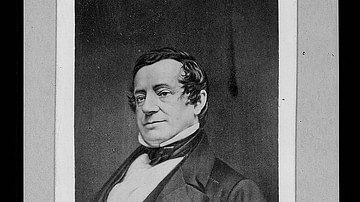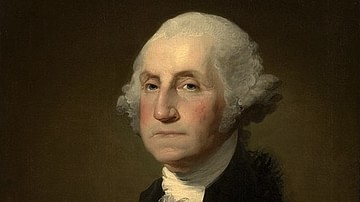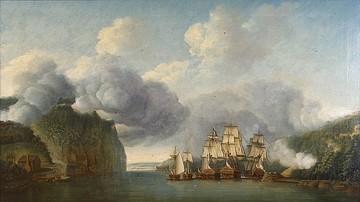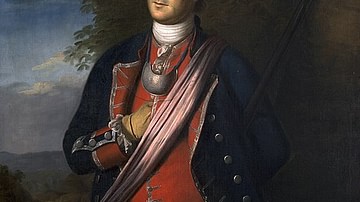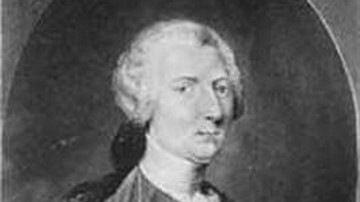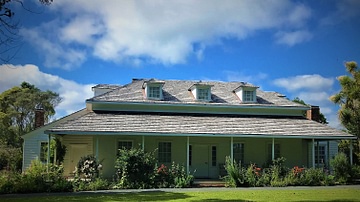How we celebrate Christmas today is largely shaped by a small group of authors who recorded festive traditions in the 19th century. These authors include Washington Irving (1783-1859), Clement Clarke Moore (1779-1863), and Charles Dickens (1812-1870). By capturing in popular print festive traditions, many of which dated back to medieval times, these authors caused something of a Christmas revival.
19th-century literature, sometimes expressly concentrating on Christmas and at other times merely using the holiday as a jovial setting for a fictional story, captured what were, in many cases, fast-disappearing traditions, which future generations would return to and update. Thus, such activities as carol singing and masque balls returned to fashion. In addition, writers of Christmas stories, which were often serialised in hugely popular weekly magazines, helped spread newer ways to celebrate such as the sending of Christmas cards and the decorating of a Christmas tree. In this article, we present through selected extracts just how some of these 19th-century authors managed to capture the spirit of Christmas for posterity.
Irving's Christmas
Washington Irving was an American author who travelled through England in 1818. In his Sketch Book, Irving devoted five chapters to recording how Christmas was celebrated in rural England.
Travelling any great distance in the 19th century often involved a long, tiresome, and uncomfortable journey in a stagecoach. Nevertheless, the certainty of seeing friends and family again, revelling in home comforts, and feasting on festive fare made the journey one of high anticipation. Irving describes the joys of travelling home for Christmas:
In the course of a December tour in Yorkshire, I rode for a long distance in one of the public coaches, on the day preceding Christmas. The coach was crowded, both inside and out, with passengers, who, by their talk, seemed principally bound to the mansions of relations or friends, to eat the Christmas dinner. It was loaded also with hampers of game, and baskets and boxes of delicacies; and hares hung dangling by their long ears about the coachman's box, presents from distant friends for the impending feast. I had three fine rosy-cheeked schoolboys for my fellow-passengers inside
…I could not but notice the more than ordinary air of bustle and importance of the coachman, who wore his hat a little on one side, and had a large bunch of Christmas greens stuck in the button-hole of his coat.
…Perhaps the impending holiday might have given a more than usual animation to the country, for it seemed to me as if everybody was in good looks and good spirits. Game, poultry, and other luxuries of the table, were in brisk circulation in the villages; the grocers', butchers', and fruiterers' shops were thronged with customers. The housewives were stirring briskly about, putting their dwellings in order; and the glossy branches of holly, with their bright red berries, began to appear at windows.
My little travelling companions had been looking out of the coach windows for the last few miles, recognizing every tree and cottage as they approached home…
(The Stage-Coach, 94-9)

Irving finally arrives at the old English hall where he has been invited to spend Christmas. Still Christmas Eve, he describes the decorated interior:
The grate had been removed from the wide overwhelming fireplace, to make way for a fire of wood, in the midst of which was an enormous log glowing and blazing and sending forth a vast volume of light and heat; this I understood was the Yule log, which the squire was particular in having brought in and illumined on a Christmas Eve, according to ancient custom.
…Supper was announced shortly after our arrival. It was served up in a spacious oaken chamber, the panels of which shone with wax, and around which were several family portraits decorated with holly and ivy. Besides the accustomed lights, two great wax tapers, called Christmas candles, wreathed with greens, were placed on a highly-polished buffet among the family plate. The table was spread with substantial fare; but the squire made his supper of frumenty, a dish made of wheat cakes boiled in milk, with rich spices, being a standing dish in old times for Christmas Eve.
(Christmas Eve, 110-11)
Irving goes on to describe the traditional activities of Christmas morning.
When I woke the next morning, it seemed as if all the events of the preceding evening had been a dream…While I lay musing on my pillow, I heard the sound of little feet pattering outside the door, and a whispering consultation. Presently a choir of small voices chanted forth an old Christmas carol, the burden of which was
Rejoice, our Saviour he was born
On Christmas Day in the morning…the morning was extremely frosty; the light vapour of the preceding evening had been precipitated by the cold, and covered all the trees and every blade of grass with its fine crystallizations. The rays of a bright morning sun had a dazzling effect among the glittering foliage. A robin, perched upon the top of a mountain ash that hung its clusters of red berries just before my window, was basking himself in the sunshine…
(Christmas Day, 117-18)
After attending the family prayers, Irving has a hearty breakfast before walking to the local church for the traditional morning service.
Our breakfast consisted of what the squire denominated true old English fare…there was a brave display of cold meats, wine, and ale on the sideboard.
…On reaching the church porch, we found the parson rebuking the grey-headed sexton for having used mistletoe among the greens with which the church was decorated. It was, he observed, an unholy plant, profaned by having been used by the Druids in their mystic ceremonies…
[The parson] turned over the leaves of a folio prayer-book with something of a flourish; possibly to show off an enormous seal-ring which enriched one of his fingers, and which had the look of a family relic…
The orchestra was in a small gallery, and presented a most whimsical grouping of heads…There were two or three pretty faces among the female singers, to which the keen air of a frosty morning had given a bright rosy tint; but the gentleman choristers had evidently been chosen, like old Cremona fiddles, more for tone than looks…
…The parson gave us a most erudite sermon on the rites and ceremonies of Christmas, and the propriety of observing it not merely as a day of thanksgiving, but of rejoicing…and concluded by urging his hearers, in the most solemn and affecting manner, to stand to the traditional customs of their fathers, and feast and make merry on this joyful anniversary of the Church…I have seldom known a sermon attended apparently with more immediate effects…
(Christmas Day, 119-126)

Irving returned to the hall, and as he dressed for the triumph of the day, the Christmas dinner, the local poor were given meat and ale in return for their contribution to the general air of merriment with their dancing, singing, and making of music.
The old squire kept up old customs in kitchen as well as hall; and the rolling-pin struck upon the dresser by the cook, summoned the service to carry in the meats.
The dinner was served up in the great hall, where the squire always held his Christmas banquet…The Butler entered the hall with some degree of bustle: he was attended by a servant on each side with a large wax-light, and bore a silver dish, on which was an enormous pig's head, decorated with rosemary, with a lemon in its mouth, which was placed at the head of the table.
The table was literally loaded with good cheer, and presented an epitome of country abundance, in this season of overflowing larders. A distinguished post was allotted to 'ancient sirloin'…There were several dishes quaintly decorated…a pie, magnificently decorated with peacock's feathers, in imitation of the tail of that bird, which overshadowed a considerable tract of the table…I found the tide of wine fast gaining on the dry land of sober judgment. The company grew merrier and louder as their jokes grew duller.
After the dinner table was removed, the hall was given up to the younger members of the family, who…played at romping games…Blind-man's-buff…[and] a burlesque imitation of an antique mask…which, from its medley of costumes, seemed as though the old family portraits had skipped down from their frames to join in the sport…and as the old manor-house almost reeled with mirth and wassail, it seemed echoing back the joviality of long departed years.
(Christmas Dinner, 132-44)

Moore's Santa Claus
Just as Irving's popular work set the tone for Christmas celebrations yet to come so the poet Clement Clarke Moore recorded the definitive portrait of Saint Nicholas as the bringer of presents to children's homes. Here is his celebrated poem 'Twas the Night Before Christmas (aka A Visit from St Nicholas), written in 1822:
'Twas the night before Christmas, when all through the house
Not a creature was stirring, not even a mouse;
The stockings were hung by the chimney with care
In hopes that Saint Nicholas soon would be there;
The children were nestled all snug in their beds,
While visions of sugar-plums danced through their heads;
And mamma in her kerchief, and I in my cap,
Had just settled our brains for a long winter nap,
When out on the lawn there arose such a clatter,
I sprang from my bed to see what was the matter.
Away to the window I flew like a flash,
Tore open the shutters and threw up the sash.
The moon, on the breast of the new-fallen snow,
Gave a lustre of midday to objects below;
When what to my wondering eyes should appear,
But a miniature sleigh and eight tiny reindeer,
With a little old driver, so lively and quick
I knew in a moment it must be St. Nick.
More rapid than eagles his coursers they came,
And he whistled and shouted and called them by name:
'Now, Dasher! now, Dancer! now, Prancer and Vixen!
On, Comet! on, Cupid! on, Donder and Blitzen!
To the top of the porch, to the top of the wall!
Now, dash away, dash away, dash away all!'
As dry leaves that before the wild hurricane fly,
When they meet with an obstacle, mount to the sky,
So, up to the house-top, the coursers they flew,
With a sleigh full of toys, – and St. Nicholas too.
And then in a twinkling I heard on the roof
The prancing and pawing of each little hoof,
As I drew in my head and was turning around,
Down the chimney St. Nicholas came with a bound.
He was dressed all in fur from his head to his foot,
And his clothes were all tarnished with ashes and soot;
A bundle of toys he had flung on his back.
And he looked like a peddler just opening his pack.
His eyes how they twinkled! his dimples how merry!
His cheeks were like roses, his nose like a cherry;
His droll little mouth was drawn up like a bow,
And the beard on his chin was as white as the snow.
The stump of a pipe he held tight in his teeth,
And the smoke it encircled his head like a wreath.
He had a broad face, and a little round belly
That shook, when he laughed, like a bowl full of jelly.
He was chubby and plump, – a right jolly old elf –
And I laughed when I saw him, in spite of myself.
A wink of his eye and a twist of his head
Soon gave me to know I had nothing to dread.
He spoke not a word, but went straight to his work,
And filled all the stockings; then turned with a jerk,
And laying his finger aside of his nose,
And giving a nod, up the chimney he rose.
He sprang to his sleigh, to his team gave a whistle,
And away they all flew like the down of a thistle;
But I heard him exclaim, ere he drove out of sight:
'Happy Christmas to all, and all a goodnight!'
(Miall, 90-1)
The Christmas Tree
Another important element of today's Christmas celebrations, the Christmas tree, gained wide popularity in the 19th century. The husband of Queen Victoria (r. 1837-1901), Albert of Saxe-Coburg and Gotha, the Prince Consort (l. 1819-1861), introduced to Britain the tradition of the Christmas tree, which was popular in his home country. The idea was spread by popular illustrated magazines like the Illustrated London News, which revealed the private festivities of the royal family. The young fir tree was decorated with candles and small presents of toys, sweets, charms, and candied fruit, all hung from its boughs and destined to be distributed to the Christmas guests who might have their name tagged to their gift. References in literature eventually made the Christmas tree the central decoration of people's homes. The author William Makepeace Thackeray, writing in his Roundabout Papers, published from the 1860s, gives the following description of his own tree:
The kindly Christmas tree, from which I trust every gentle reader has pulled out a bonbon or two, is yet all aflame whilst I am writing, and sparkles with the sweet fruits of the season. You young ladies, may you have plucked pretty giftlings from it; and out of the cracker sugar-plum which you may have split with the captain or the sweet young curate may you have read one of those delicious conundrums which the confectioners introduce into the sweetmeats, and which apply to the cunning passion of love…As for Dolly, Merry, and Bell, who are standing at the tree, they don't care about the love-riddle part, but understand the sweet-almond portion very well. They are four, five, six years old.
(80-1)

Dickens & the Christmas Spirit
The main traditions of the festive season may have been established by others, but it was the English author Charles Dickens who, more than any other, defined the spirit of a modern Christmas, that is the message that Christmas is a time for the gathering of family and friends from afar and, in the spirit of giving, helping those around us. In The Pickwick Papers, written in 1836-7, Dickens takes up the first of these themes:
Christmas was close at hand, in all his bluff and hearty honesty; it was the season of hospitality, merriment, and open-heartedness…And numerous indeed are the hearts to which Christmas brings a brief season of happiness and enjoyment. How many families, whose members have been dispersed and scattered far and wide, in the restless struggles of life, are then reunited, and meet once again in that happy state of companionship and mutual good-will which is a source of such pure and unalloyed delight…How many old recollections, and how many dormant sympathies, does Christmas time awaken!…Happy, happy Christmas that can win us back to the delusions of our childish days; that can recall to the old man the pleasures of his youth, and transport the sailor and the traveller, thousands of miles away, back to his own fireside and his quiet home!
(393-4)
Dickens expands on the second theme, that of Christmas goodwill and generosity in a chapter dedicated to the Christmas Dinner in his Sketches by Boz, published in the 1830s:
There seems a magic in the very name of Christmas. Petty jealousies and discords are forgotten; social feelings are awakened in bosoms to which they have long been strangers; father and son, or brother and sister, who have met and passed with averted gaze, or a look of cold recognition, for months before, proffer and return the cordial embrace, and bury their animosities in their present happiness. Kindly hearts that have yearned towards each other, but have been withheld by false notions of pride and self-dignity, are again reunited, and all is kindness and benevolence! Would that Christmas lasted the whole year through (as it ought), and that the prejudices and passions which deform our better nature were never called into action among those to whom they should ever be strangers.
(216)

A decade later, Dickens went even further and devoted an entire novella to the theme that Christmas should be a time of goodwill and charity. In his most famous festive work, A Christmas Carol, written in 1843, Dickens presents the rich miser Ebeneezer Scrooge, who, one Christmas Eve in London, is visited by the terrible spirit of Jacob Marley, his late business partner. Marley warns Scrooge that unless he changes his miserly ways and starts doing some good in this life, he will sorely repent it in the next. To reinforce the message, Scrooge must endure visits by three more spirits: the ghosts of Christmas Past, Present, and Future. Scrooge's travels through time are coloured by many references to Christmas traditions from Mrs Cratchet's steamed Christmas pudding to the raucous games at the party of Scrooge's nephew Fred to the butcher's prize turkey. But it is one message alone that traverses the story, and it is aimed at all those who would listen: it is never too late to embrace the spirit of the Christmas season, even for one such as Scrooge:
He became as good a friend, as good a master, and as good a man as the good old city knew…and it was always said of him that he knew how to keep Christmas well, if any man alive possessed the knowledge. May that be truly said of us, and all of us!
(83)


